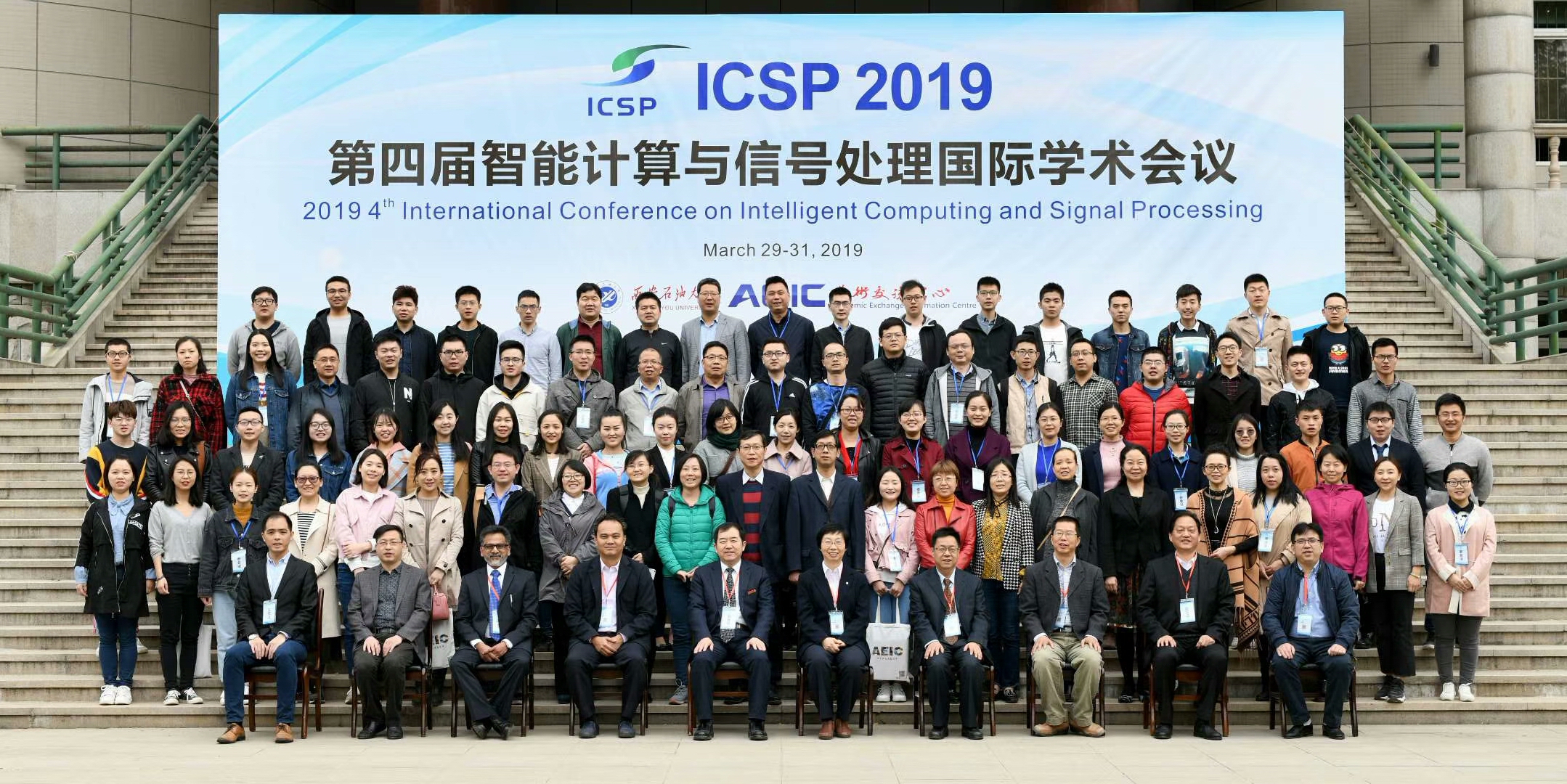| 2019 4th International Conference on Intelligent Computing and Signal Processing (ICSP 2019) |
2019 4th International Conference on Intelligent Computing and Signal Processing (ICSP 2019) has been held successfully from March 29-31, 2019 on Xi'an, China. There were about 200 delegates from each city that attended the conference, several experts in related fields were invited to give keynote speeches. The in-depth discussions among the attendees effectively advanced the academic exchange.
*ICSP 2019: EI Compendex Indexing | Scopus Indexing | Conference proceedings in JPCS
| Group Photo |

| Keynote Speakers |
Prof. Weihua Zhuang, University of Waterloo, Canada |
| Title: Service Provisioning in 5G Communication Networks |
Speech Abstract:
The fifth generation (5G) communication networks will accommodate a wide range of emerging services with diverse service quality requirements. The network will integrate a variety of network resources and technologies to support high transmission rate and to enhance quality of experience to mobile users. The traditional one-size-fits-all network architecture cannot efficiently meet the needs of different services, due to the poor scalability, limited adaptability, and inflexibility. Network function virtualization (NFV) enabled by software defined networking (SDN) technology is a promising approach for an agile and flexible 5G networking infrastructure. In this presentation, we will provide an overview of several recent studies for 5G networks, including dynamic radio resource slicing in wireless network virtualization, computing and transmission resource allocation in the core network, and how to establish a customized virtual network topology for multicast services.
| A.Prof. Nagula Sangary, University of Waterloo & Prudential Technology Ltd. |
| Title: Trends and Challenges in Terrestrial Satellite Wireless Communication Systems in mm-Wave range. |
Speech Abstract:
With most data communication systems migrating to mobile networks and requiring higher throughput, the shortage of bandwidth is becoming an issue. This has necessitated the expansion of the wireless networks into underutilized frequency spectra of millimetre wave (mm-wave) range. The use of mm-wave has its own challenges, and the outstanding issue among them is the high path loss. Furthermore, due to the size difference in wavelengths between microwave and millimetre waves, in densely populated indoor and outdoor environments, the signal propagation in mm-wave takes on a different perspective. In mm-wave, it would be conducive to use a technique such and beamforming and beam stirring to overcome the higher path loss issue and achieve the desired goal of wider area coverage. This can be achieved with the use of a Phased Array Antenna system, which is widely used in Satellite communication systems.
In addition to the terrestrial wireless communication system, the Lower Earth Orbit (LEO) Satellite systems operating in the mm-wave will also become an important mix in the next generation wireless systems. The cost of building and launching satellite has fallen dramatically over the past few years, this in part due to the smaller size of the satellites and advancements and reuse of technologies that are common in the mobile phone industry. One of the advantages of the mm-wave system is that the same technologies, methods and knowledge used in satellite communication can be applied to terrestrial systems. In this presentation, we will explore some of the key factors, beginning with Link-budget and channel impairment that affect the satellite and conversely the terrestrial mm-wave communication systems.
Prof. Lianxiang Zhu, Xi'An Shiyou University, China
Title: Understanding Generative Adversarial Networks from the Point of View of Manifold Geometry
Speech Abstract:
Generative adversarial networks (GAN) can be characterized by training a pair of networks in competition with each other, namely the generator with the aim of making realistic data, and the discriminator to tell real data and generated data apart. The networks that represent the generator and discriminator are usually implemented by multi-layer networks consisting of convolutional and/or fully-connected layers. The generator network can be considered as a mapping from some representation space, called latent space, to the space of data, in which the weights or coefficients of the network characterized feathers of the data and is a more concise and perceptual friendly representation. Manifold is a topological space that each n-dimensional point has a neighborhood that is homeomorphic to the Euclidean space of dimension n. It is reasonable to assume that the latent space of GAN generator is more suitable to be measured by Euclidean distance than original data as it organized data features in much orderly way. Therefore it must has some characteristic like that of manifold geometry and can be analyzed with the theory of manifold learning. After gives an introduction of GANs theory and their applications, the presentation introduces manifold geometry to GANs and discusses the possibility of using manifold learning to address issues such as model collapse and training instability in GAN.
Prof. Badrul Hisham Ahmad, University Teknikal Malaysia Melaka
Title: Switchable Absorptive Bandstop-to-Bandpass filter
Speech Abstract:
New developments in the design of the switchable microwave filters in cognitive radio system are essential to meet the ever increasing demands of discriminating between wanted and unwanted signals. There is also demand for miniaturization of microwave communications systems. A compact design can be achieved through the implementation of planar microstrip technology. Conventional electronically tunable bandstop filters suffer performance degradation due to the finite unloaded Q of the resonators and also the loss associated with the switching elements. In 2005, a new filter topology using lossy resonators has been introduced where the topology can be used to partially compensate for the loss. The lossy Allpass network demonstrates the concept and design of absorptive bandstop response with a perfectly matched at all frequencies. The filter is based on the half-wavelength λ/2 resonator with gap coupling, parallel with an Allpass nominally-90°-phase-shift element, which can be optimized to achieve a high Q-factor. A frequency agile bandstop filter based on this topology has been developed, but such filters as well as conventional switchable bandstop filters encounter performance degradation in terms of tuning bandwidth and stopband bandwidth due to the frequency dependant losses and couplings. Through this presentation the switchable microwave filter is investigated and developed, where this filter is able to switch from absorptive bandstop (ON state) to bandpass (OFF state) response. This switchable filter is designed using parallel coupled resonator. The parallel coupled resonator consisted of two low-Q lossy resonator connected with 90° wavelength and with correct k-inverter factor to produce an absorptive bandstop response. The filters are integrated with PIN diode to change the filter response. The absorptive bandstop filter operates at 2.4 GHz where S11 is below than 15 dB and S21 has high selectivity with the narrow bandstop response. For a bandpass response, the measurement results are inline with the simulated results.
| Oral Speakers |
